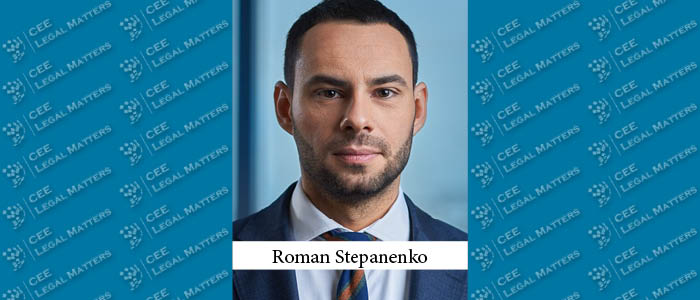The post-war reconstruction of Ukraine is an immense challenge that necessitates mobilization of substantial resources. During a United Nations Security Council meeting in November of the previous year, the approximate cost of the country's reconstruction and rehabilitation was estimated at $400 billion. Acknowledging the impossibility of covering such expenses solely through state funds and international aid, Ukraine is placing emphasis on enhancing collaboration with the private sector. Among the various forms and mechanisms for securing resources required for rebuilding of the destroyed infrastructure, public-private partnership (PPP) stands out as one of the most widely debated.
What makes PPP attractive to Private Partners?
The core of PPP involves blending government and private sector resources with a simultaneous distribution of risks, responsibilities, and revenues. Essentially, it represents a mutually advantageous cooperation between private enterprises and the government. In this collaborative framework, private investors receive state assistance and favorable terms for implementation of their projects. At the same time, the government obtains an opportunity to advance a strategically vital sector or ensure availability of important public services without making substantial immediate investment out of the state treasury.
In a broad sense, the concept of PPP can be simplified as follows: a private investor manages a government or municipal asset, reconstructs or builds it, maintains and develops it for certain period (ranging from 5 to 50 years), earning income from the asset and sharing a part of it with the state (mostly relevant to commercial projects), or receiving guaranteed (availability) payments from the government over the lifetime of the PPP project. Subsequently, the asset is returned by the private investor to the management/administration of the government or municipality. It is worth noting that such a description is tentative, as global PPP practices encompass numerous collaboration models that involve different terms and requirements for asset title/ownership transfer, as well as the distribution of risks and profits.
The practices of leading countries worldwide have repeatedly demonstrated effectiveness of the PPP model as a collaboration between the public and private sectors. For instance, in the European Union in 2022, PPP projects attracted EUR 9.8 billion, and indicators suggest a trend of increasing their share in the GDP of European countries each year. This statistics is not surprising, as PPP structures allow for the reduction of risks associated with private investments and ensure security of invested funds.
PPP is particularly effective as a tool for post-crisis recovery and development, especially when there is a growing business interest in government support. The Ukrainian Government's attention to this form of collaboration in the context of post-war reconstruction is entirely justified, as PPP projects have an enormous potential for mobilising of private capital for the swift rebuilding of destroyed infrastructure especially according to the world’s best practices and standards.
The concept of PPP has a longstanding history within Ukrainian legislation. In the 1990s, the first legislative acts in this area, including the Law of Ukraine On Concessions, were adopted. In 2010, the fundamental Law of Ukraine On Public-Private Partnership was enacted. The initial years of establishing the PPP mechanism in Ukraine were not considered successful, as the number of initiated projects was insignificant, and the legal regulation had quite a few shortcomings. However, in 2019, there was a significant overhaul of the legislation and a reform aimed at genuinely providing better comfort for private partners in line with international best practices.
The realities of post-war reconstruction necessitate further refinement of the existing legislation on PPP to create the most favorable conditions for attracting investors. The Government has proactively addressed the challenges by developing Draft Law No. 7508. This legislative initiative is designed to tailor PPP procedures to meet the demands of large-scale post-war reconstruction. The proposed changes include expanding the list of forms of state support for PPP projects, regulating funding sources (especially addressing the issue of reconstruction funds from the EU and other donors), streamlining preparation procedures, and introducing new forms of cooperation. These amendments are intended to simplify and expedite the process of engaging private partners in the reconstruction of devastated facilities.
Which economic sectors display the most significant promise for Public-Private Partnerships?
As mentioned earlier, PPP is a proven tool for the rapid restoration of infrastructure, enabling the initiation of large-scale construction projects within short time frame. Recognising the effectiveness of this mechanism, ministers and other representatives of the Ukrainian Government emphasised back in July 2022, during a conference on post-war reconstruction in Lugano, that PPP should become the primary form of attracting funds to various sectors. According to the Recovery Plan for Ukraine presented in the Swiss city, the most anticipated involvement of private partners shall be in the following sectors:
- Restoration of Educational and Healthcare facilities
These sectors have suffered significantly from the hostilities, with over 350 educational institutions and more than 200 medical facilities being completely destroyed. In order to swiftly restore access to social services for residents, the government places significant hopes on large-scale PPP projects that would contribute to the construction of hundreds of new schools and hospitals. Consequently, the government plans to create favourable conditions to attract private partners for the development of such facilities. Notably, Draft Law No. 7508, as mentioned earlier, proposes enhancements to partnership mechanisms to attract and safeguard the interests of potential investors involved in these projects.
- Modernization of Road infrastructure
Traditionally, PPPs as a means of private investment mobilization are primarily associated with road infrastructure. As an illustrative example, preparations for the concession of certain highways were underway on the eve of the war. Within the context of post-war reconstruction, PPP mechanisms are also envisaged for restoring damaged roads and constructing new ones. However, road construction is planned to occur both under concession rules and through non-concession PPP formats, serving as an alternative to contractor agreements.
- Military-Industrial Complex
Undoubtedly, the reconstruction of Ukraine's economy will significantly emphasise the development of its robust military-industrial complex, as this sector stands out as one of the most promising. The government is committed to implementing twenty PPP projects in the defence industry over the next ten years. Collaboration in this sector will be particularly attractive to private investors, given the anticipated sustained demand for armaments over an extended period. Ukraine, in turn, will offer perhaps the most favourable conditions for joint production in this strategically vital domain.
- Digital Transformation of the Economy
The reconstruction of Ukraine envisions the creation of an economy grounded in modern technologies. Consequently, plans are underway to implement a series of large-scale technological projects to establish Ukraine's status as a contemporary digital hub in Europe. Specifically, among the government's initiatives is the engagement of private investors through PPP in projects involving the construction of major international channels, enhancement of electronic communication networks, fortification of cybersecurity, etc.
- Development of Railway, Port, and Aviation infrastructure
The revitalization of the economy is only possible with the construction of a robust logistics infrastructure in the country. Consequently, the application of the PPP mechanism in the restoration of dilapidated railway, port, and aviation facilities is of utmost importance. Additionally, there are plans to utilize PPP formats to develop regional airports, seaports, multimodal freight transport, and other related initiatives to enhance the overall connectivity and efficiency of the transportation network.
Therefore, public-private partnership is poised to become a formidable driver of post-war reconstruction in Ukraine, attracting substantial foreign investments into vital economic sectors. The effective implementation of such projects will lay the foundation for the country's future economic prosperity. We hope that legislative changes will be adopted soon, refining PPP mechanisms and adapting them to the conditions of the forthcoming reconstruction.
By Roman Stepanenko, Partner, Asters




